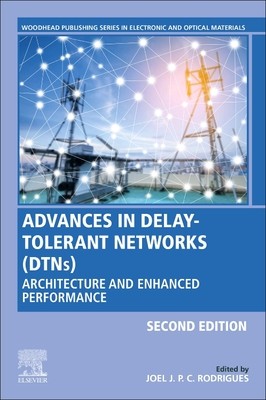
- We will send in 10–14 business days.
- Publisher: Woodhead Publishing
- ISBN-10: 0081027931
- ISBN-13: 9780081027936
- Format: 15.2 x 22.9 x 1.7 cm, softcover
- Language: English
- SAVE -10% with code: EXTRA
Advances in Delay-Tolerant Networks (Dtns) (e-book) (used book) | bookbook.eu
Reviews
Description
Advances in Delay-Tolerant Networks: Architecture and Enhanced Performance, Second Edition provides an important overview of delay-tolerant networks (DTNs) for researchers in electronics, computer engineering, telecommunications and networking for those in academia and R&D in industrial sectors. Part I reviews the technology involved and the prospects for improving performance, including different types of DTN and their applications, such as satellite and deep-space communications and vehicular communications. Part II focuses on how the technology can be further improved, addressing topics, such as data bundling, opportunistic routing, reliable data streaming, and the potential for rapid selection and dissemination of urgent messages.
Opportunistic, delay-tolerant networks address the problem of intermittent connectivity in a network where there are long delays between sending and receiving messages, or there are periods of disconnection.
EXTRA 10 % discount with code: EXTRA
The promotion ends in 19d.10:02:23
The discount code is valid when purchasing from 10 €. Discounts do not stack.
- Publisher: Woodhead Publishing
- ISBN-10: 0081027931
- ISBN-13: 9780081027936
- Format: 15.2 x 22.9 x 1.7 cm, softcover
- Language: English English
Advances in Delay-Tolerant Networks: Architecture and Enhanced Performance, Second Edition provides an important overview of delay-tolerant networks (DTNs) for researchers in electronics, computer engineering, telecommunications and networking for those in academia and R&D in industrial sectors. Part I reviews the technology involved and the prospects for improving performance, including different types of DTN and their applications, such as satellite and deep-space communications and vehicular communications. Part II focuses on how the technology can be further improved, addressing topics, such as data bundling, opportunistic routing, reliable data streaming, and the potential for rapid selection and dissemination of urgent messages.
Opportunistic, delay-tolerant networks address the problem of intermittent connectivity in a network where there are long delays between sending and receiving messages, or there are periods of disconnection.


Reviews